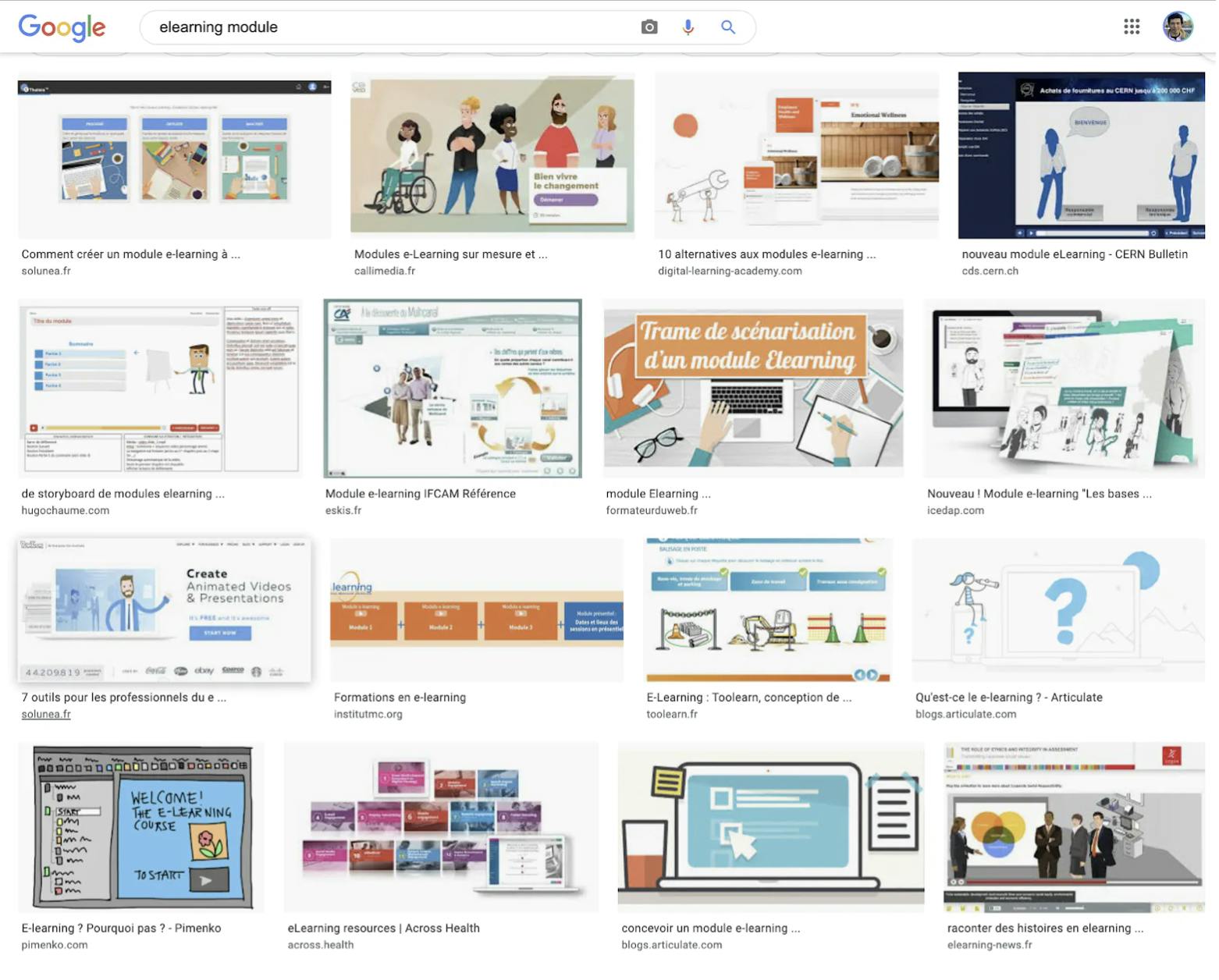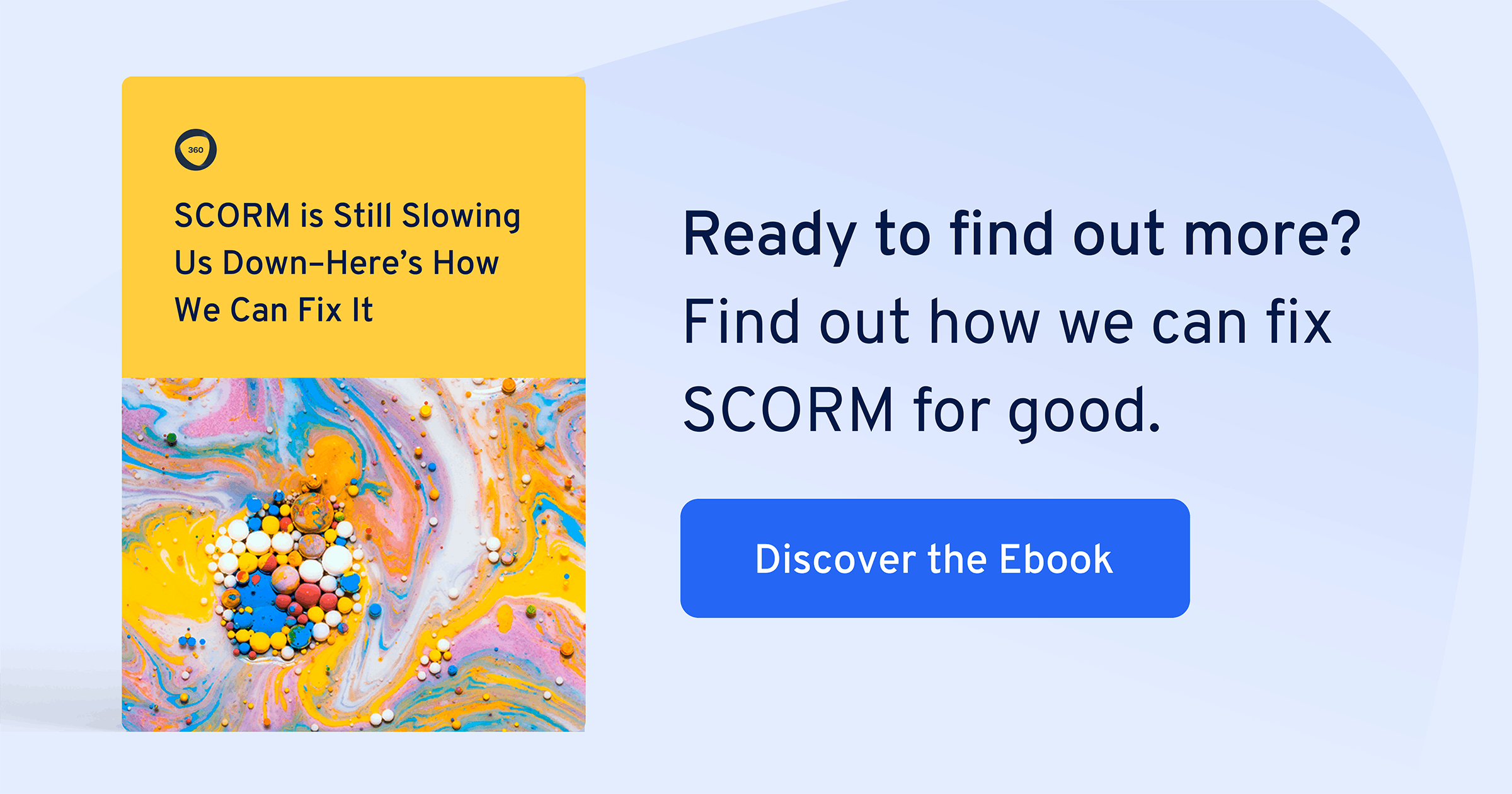Most SCORM content looks like it’s stuck in a time-capsule: it’s dated, clunky, and uninviting for the learner.
Unfortunately, this 20-year-old system continues to weigh down many L&D teams. Not only is SCORM content difficult to manage for instructors, it also isn’t very engaging for learners. The result is often poor course engagement and completion rates.
You might wish you could throw these dull courses out with your spring-cleaning. But the reality is, for many L&D teams, SCORM is too entrenched to be that easily discarded. We know, we’ve been there.
So, does this mean you’re forever stuck scorning SCORM?
Not necessarily.
Read on to find out how to make SCORM work for you in 2021.
How SCORM became the eLearning norm
You probably already know that SCORM functions as a common language, allowing L&D teams to share learning content across different platforms. But did you also know that it originated as part of a US department of defense program? This helps explain why SCORM is heavily focused on admin, but unappealing for the most important people: learners.
But back in the 90s, SCORM was a radical idea that unlocked amazing new possibilities in L&D. It allowed instructors to easily share original or third-party content, and it soon became the norm, with L&D teams relying on thousands of SCORM-based courses. It was the best—and only—option out there, and businesses understandably went all in.
The problem is that SCORM hasn’t evolved with the times. For instance, although most digital content has moved to HTML 5, SCORM is still stuck in the days of Flash-based animation. It’s just too expensive to update all those thousands of existing courses, which is why most SCORM-based modules still look like this:

In other words, SCORM is Windows95 in an Alexa world—and it’s slowing L&D teams down.
5 reasons you’re probably over SCORM
So, what do we mean when we say SCORM is slowing down L&D teams? For starters:
1. SCORM makes course creation slow, unresponsive, and expensive
You know it, we know it. Building a course with SCORM means juggling the timetables, expectations, and budgets of multiple stakeholders. Instructional designers, business analysts, technical experts, and operational managers all need to coordinate from storyboarding through to validation and content production.
Creating one course feels like organizing the next Olympic Games. And, at a price tag of over $20,000 per course, that comparison isn’t far off. The bottom line? Over-reliance on SCORM makes organizations less agile, and less able to take advantage of new learning opportunities.
2. It’s even harder to update courses once they go live
Your eLearning course content should always be evolving: regulations change, employees come and go, novel business strategies emerge, and new learning needs come to light. When course content is set in stone and can only be updated as an entire unit—as is the case with SCORM—it makes it impossible to update training programs at the pace of your business.
Having to start over on a course you just spent many months—and dollars—developing is painful. But letting employees rely on outdated information is worse. The rigidity of SCORM content often leaves L&D teams between a rock and a hard place.
3. There’s no collaboration in the creation process
Although you need to be the go-between for multiple stakeholders, SCORM doesn’t make adequate use of your most important asset: your employees.
L&D teams aren't able to get at the precious institutional knowledge that subject-matter experts know so well. Instead, they might rely on off-the-shelf content or one or two (external) experts. Their knowledge might be extensive, but if all that institutional knowledge goes untapped, it’s still a missed opportunity for collaboration.
4. SCORM content is flat and unengaging
Most learners are used to engaging with their digital content: liking, sharing, adding filters, tagging friends, and more. Now, social media has set a new standard for the level of interaction people expect within the digital environment.
And yet, SCORM content remains static. There might be some basic animations, but it’s still a one-way exchange: your learners don’t have the opportunity to interact with the content or share their thoughts, responses, and ideas. This makes the learning experience more passive than active.
5. It creates a real headache for L&D teams
The bottom line is that, with SCORM, L&D teams spend too much time on basic administrative tasks like distributing courses, counting completions, and reviewing older content for accuracy. At the same time, it’s much harder to get a true understanding of which courses or modules are getting the best responses, since you can’t measure engagement with specific pages.
L&D teams are stuck with the grunt-work, without the tools to iterate or experiment to improve learning outcomes.
All in all, SCORM looks less appealing by the day. Surely, over the last 20 years, someone must have come up with a better way to create and share eLearning content?
Enter: interactive learning.
Increase agility and scalability with interactive learning
When it comes to eLearning, ‘SCORM is the norm.’ Even if we know it isn’t perfect, it’s unrealistic to think L&D teams can throw the baby out with the bathwater. Luckily, with interactive learning platforms, they don’t have to.
In the early 2010s, a new player arrived on the eLearning scene: interactive learning platforms. Sometimes called LXPs (Learning Experience Platforms), peer learning or Collaborative Learning platforms, these solutions answered many of the issues SCORM content created:
- They put human exchange at the heart of learning
- They rely on learners to declare their own learning needs (instead of a top-down system)
- They make colleagues subject-matter experts by giving them the chance to share institutional knowledge
This all adds up to making interactive learning fast, peer-based, and scalable: everything SCORM isn't.
The best part for L&D teams is that many of these interactive learning platforms, including our own Collaborative Learning platform, easily integrate SCORM content. So, you can keep your most successful SCORM courses while continuing to iterate on them with social interactions, and can even include new institutional knowledge by subject-matter experts. It’s a win-win.
Related: Do you need an LMS, an LXP, a Talent Suite, or a Learning Platform?
How to make SCORM work for your L&D team (in 2026)
Interactive learning platforms are an excellent way to make the most of your existing SCORM content, while also increasing your agility, scalability, and the quality of your learning outcomes. But managing that shift is a complex topic, and we’ve only just scratched the surface.
If you’re serious about making SCORM work for you, our ebook offers specific tips for how to overcome the challenges of moving past SCORM. Here, we tell the story of our battle against SCORM as a company, and showcase some case studies of how our clients use our platform to deliver interactive and responsive learning.



